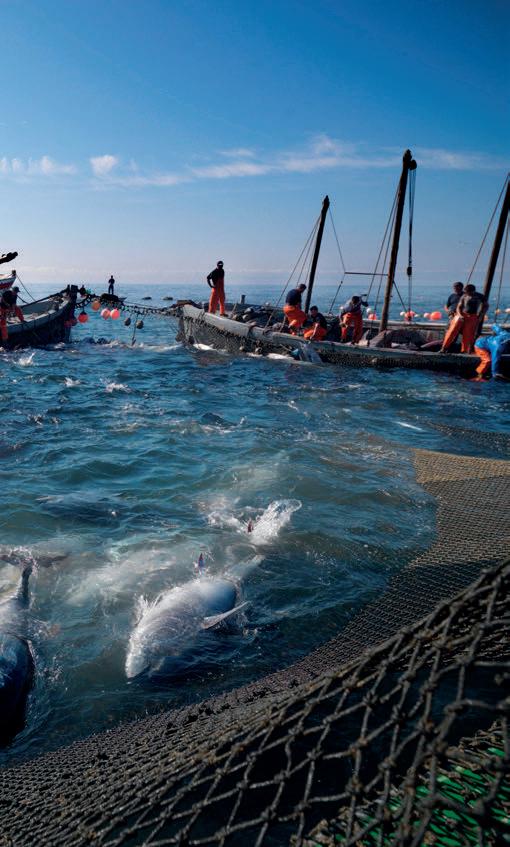
2 minute read
Historia / history
Our past
Although remains can be found from the Palaeolithic period, it was not until the arrival of the Tartessians and Phoenicians that these beaches started being relevant from the commercial and historical point of view.
Advertisement
In the early days of Zahara de los Atunes, the stagnation of the Cádiz population was highly significant, for more than 200 years, on the Castilian-Nazari border (Late Middle Ages and Early Modern Times). As a result, the repopulation attempts of the old municipality of Vejer failed. This, together with its being on the border, as well as pirates and tuna fisheries (almadrabas) all conditioned the town’s development.
In the 15th century, the Duke of Medina Sidonia exchanged the towns of Zafra, Zafrilla and Halconera with King Fernando IV for that of Vejer, precisely in order to be able to control the almadrabas at Conil and Zahara. Neither the border situation, nor the frequent attacks by Barbary pirates, from the 15th century, could deter the Duke in his determination to operate the highly profitable fisheries, building castles at Conil and Zahara to defend the almadrabas and the coast.
So we could say that Zahara de los Atunes, as a population centre, basically emerged, from the building of the castle and Zahara de los Atunes by the Dukes of Medina Sidonia.

Quiénes fuimos
Aunque existen vestigios desde el Paleolítico, no será hasta la llegada de los tartesos y fenicios cuando estas playas comenzarán a tener cierta relevancia desde el punto de vista comercial e histórico.
En el nacimiento de Zahara de los Atunes tuvo una gran importancia el estancamiento en la población de Cádiz, durante más de 200 años, de la frontera castellano-nazarí (Baja Edad Media y comienzos de la Modernización). Este hecho hizo que fracasasen los intentos repobladores del antiguo término de Vejer. Este factor unido a la frontera, piratas y almadrabas, condicionaron su nacimiento.
En el siglo XIV (año 1307), el duque de Medina Sidonia cambió las villas de Zafra, Zafrilla y Falconera por la villa de Vejer al rey Fernando IV, precisamente para poder dominar las almadrabas de Conil y Zahara. Ni la situación fronteriza, ni los frecuentes ataques de los piratas berberiscos, a partir del siglo XIV (año 1307), arredraron al duque en su empeño por la explotación de sus rentabilísimas pesquerías, construyendo sendos castillos en Conil y Zahara para defensa de la almadraba y su costa.
Así que podemos decir que Zahara de los Atunes, como núcleo poblacional, surgió, básicamente, de la construcción del castillo de Zahara de los Atunes por los Duques de Medina Sidonia.






